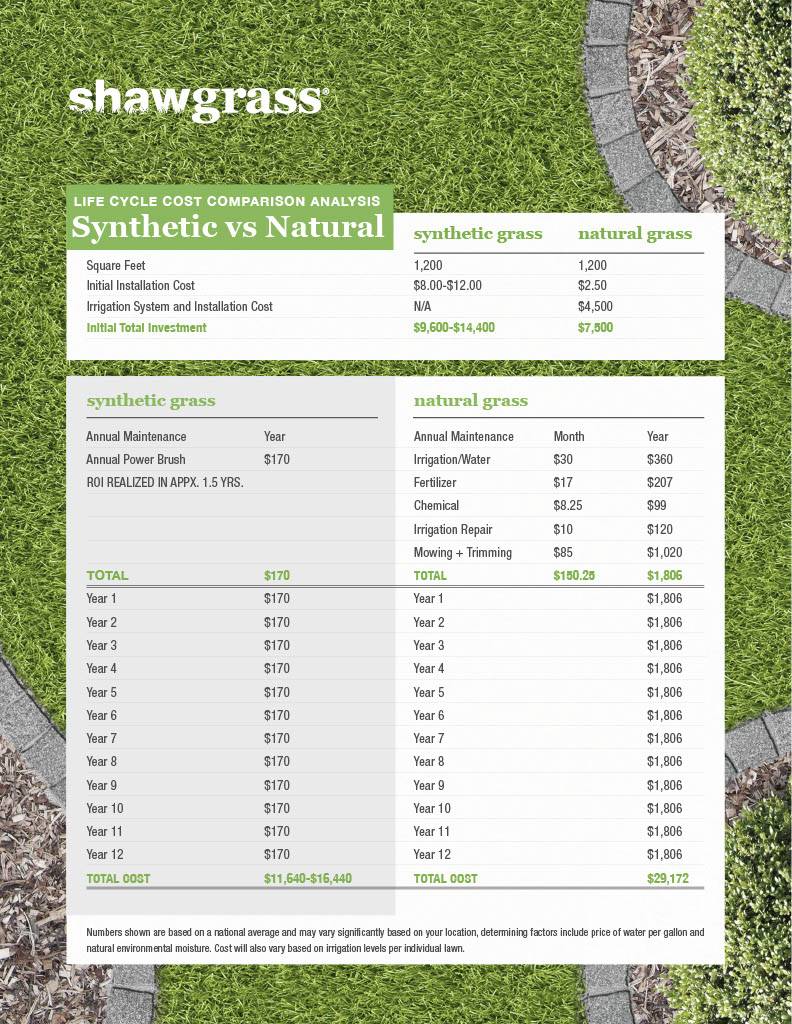The History of Artificial Grass for Landscaping
The history and evolution of artificial grass for landscaping are rooted heavily in its ancestor – sports turf. Synthetic grass has evolved quite a bit since the first artificial fields were introduced in the 1960s.
A modern, technically advanced surface for each sport is designed to yield a consistent performance for that particular sport. Artificial grass has also found its way into the landscaping industry for both residential and commercial use alike.
The History of Artificial Grass for Sports
What began as an idea to better inner-city youth’s physical fitness in the 1950s gave birth to an industry dedicated to artificial grass production.
Synthetic turf was installed first in 1964 at the Moses Brown School in Providence, Rhode Island on a recreation field. However, the first large synthetic turf installation came to the public soon after, in 1966, when synthetic turf was installed in the Astrodome in Houston, Texas. As a result of the Astrodome’s huge success, synthetic turf was popping up in other stadiums and schools becoming a staple to their athletics programs throughout the United States and Canada.
During the 1970s, the synthetic grass industry followed the shag carpet trend and introduced “shag turf.” |Having longer grass blades created from a more supple polypropylene material made them more visually appealing and user-friendly.
By the third generation of artificial turf in the 1990s, the fibers featured a much more supple polyethylene blade—this is the grass you will find on any sports, residential, or commercial landscape today.
The History of Artificial Grass for Landscaping
The primary focus of artificial turf was within the sports industry for well over 20 years. However, in the early 1990s, using synthetic turf in the dry, drought-prone Western region of the United States gained more and more popularity.
The trend has been driven by the substantial improvement of the variety and quality of available synthetic grasses, along with the reduced cost to maintain vs. natural grass. Because synthetic lawns may be a sizeable water conservation measure in areas where water usage may be concerning, a lot of commercial building managers have seen the advantages of synthetic turf.
Where to Use Synthetic Turf
Though short, the history of synthetic lawns certainly isn’t lacking in creativity. Because you no longer have to be concerned with sunlight, watering, or fertilizing artificial grass, turf is perfect for areas where traditional grass can’t grow well.
The most popular places for artificial turf are:
- Difficult slopes
- Patio areas
- High foot traffic areas
- Hotels
- Office buildings
- Airports
- Pool areas
- Rooftops
- Backyards
A big advantage of synthetic grass is how creative you can get with it. Different colors, pile heights, and shapes let you have a fresh look. Choosing steppingstones, concrete slabs, and other designs within the turf are possible, also. The sky is the limit!
Organic Lawn Costs vs. Artificial Lawn Costs
While the history of artificial grass lawns might be short,|Yes, the history of artificial lawns may be short, but it is certainly more cost-effective than natural lawns. Making the change from natural grass to synthetic turf will allow you to control your landscaping budget.
Traditional lawn maintenance requires frequent mowing, watering, fertilizing, seeding, pest control… and on and on. And if you have pets using the grass on your property, you are probably very familiar with the brown spots where Fido chooses to relieve himself, too.
Even if you do everything yourself, you are spending irreplaceable minutes away from the other things you could be doing instead—like spending time with family and friends or exploring your hobbies more.
Take a look at the chart below to figure out just how fast you will get a return on your investment by choosing synthetic landscaping.

The Shawgrass Advantage
Shawgrass products are designed and developed by the same research and development team behind the world-class athletic fields created by Shaw Sports Turf. Shawgrass products are designed to provide the look of natural grass and the performance characteristics to deliver ,maximum durability.
If you want to see and feel this grass for yourself, you can call us at (724) 717-6027 or contact Last Lawn today.